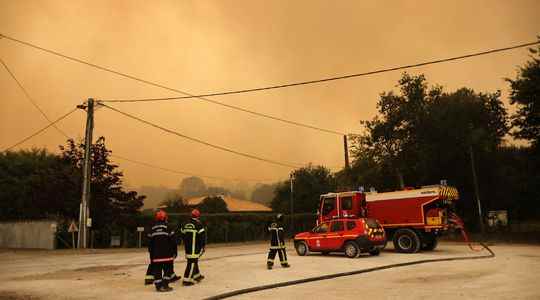While an extraordinary fire is still eating away at the Gironde and has already consumed ten thousand hectares, the flames have also affected the canopy in Ille-et-Vilaine, west of Rennes. Quickly brought under control, this outbreak of fire nevertheless illustrates the gradual increase in the north of the fire risk, intensified by global warming. In addition to the territories regularly affected, particularly in the southern part of France, forest fires will in the future multiply in the West and the Paris basin, warns Jean-Louis Pestour, national head of forest fires at the National Forestry Office (ONF).
L’Express: Was the Gironde department a territory considered to be particularly at risk for fires?
Jean-Louis Pestour: The Gironde is one of the sectors where the risk already existed. There is the Landes massif, the largest wooded massif in France. The large massifs are the most at risk. If it is not brought under control very quickly, this fire can take on a magnitude that makes any intervention difficult. In addition, young stands were installed in the Landes in the 1990s. Slightly covered, dense, this type of forest is accompanied by significant vegetation on the ground. If it dries out, it can be used as fuel.
Due to a climate so far relatively milder than in the Mediterranean arc (from Corsica to the Pyrenees), the traditional breeding ground for forest fires, the risk of fire remained relatively moderate in Gironde. It will increase sharply in the coming years, due to global warming.
The South is not the only territory affected by the flames. A fire of around twenty hectares was brought under control west of Rennes this Saturday. Is this an isolated incident?
Within the ONF, and in partnership with Météo France and INRAE, we are trying to develop projections for 2050, 2070 and 2100. These are in progress. They are already telling us that the risk of fire will increase everywhere, with sharp increases in areas that were very little affected before. In addition to the South, the fire risk will extend to Brittany, Vendée, as well as the Paris basin. The Rennes fire is part of this dynamic.
Fortunately, the ONF does not expect fires of a magnitude comparable to that in Gironde or the Iberian Peninsula. And the highest risk will remain in the South, where it will increase further. The periods of risk will lengthen, and the fires will multiply. We cannot exclude that there will be, in the future, several so-called “non-standard” fires per year, like that of Gironde this year, which runs over ten thousand hectares. The northeast quarter, the most wooded area in France, will also see its fires increase, but will remain relatively preserved. For the moment.
Why is the fire going north? Is it just a temperature issue?
Extreme weather phenomena are increasing with global warming: record temperatures, long droughts. Some trees are under water stress. They lack water, weaken and may die. This generates more and more dry combustible mass. A real powder keg.
The forest is also affected by the rise in average temperatures. Trees cannot adapt to a new climate overnight. Forests evolve and the most resistant species will multiply and the genetic heritage will evolve, but this is in the very long term. In the short term, forests are weakening. This is once again a godsend for the flames. Thus, in 2010, 30% of French forests were at risk. The projections are at 50% by 2050.
Can we stop this phenomenon?
At the ONF, we work to remove dead wood from the forests we are responsible for maintaining. We try to leave with more suitable species, which come from more southern areas. Species from North Africa will soon be planted in the Mediterranean zone, or even further north. The landscapes will thus be transformed: a change imposed by the climate crisis. But it is not a question of working only on the trees. We must of course limit global warming. And above all continue prevention, because most fire starts are of human origin.
